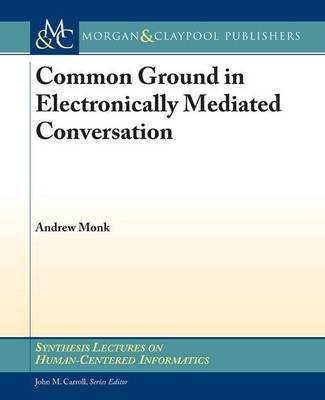Technologies that electronically mediate conversation, such as text-based chat or desktop video conferencing, draw on theories of human-human interaction to make predictions about the effects of design decisions. This lecture reviews the theory that has been most influential in this area: Clark's theory of language use. The key concept in Clark's theory is that of common ground. Language is viewed as a collaborative activity that uses existing common ground to develop further common ground and, hence, to communicate efficiently. The theory (a) defines different kinds of common ground, (b) formalizes the notion of collaborative activity as a "joint action," and (c) describes the processes by which common ground is developed through joint action. Chapter 1 explains why a purely cognitive model of communication is not enough and what is meant by the phrase "collaborative activity." Chapter 2 introduces the idea of common ground and how it is used in language through an example of two people conversing over a video link. Chapter 3 indicates where the interested reader can find out about the antecedents to Clark's theory. Chapter 4 sets out the fundamental concepts in Clark's theory. Chapter 5 uses five published case studies of electronically mediated communication to illustrate the value of the theory. These include studies of a computer-supported meeting room (Cognoter), a video tunnel that supports gaze awareness, video conferencing in medical consultation, and text chat.
- ISBN10 1598298585
- ISBN13 9781598298581
- Publish Date 8 January 2009 (first published 4 November 2008)
- Publish Status Active
- Imprint Morgan & Claypool
- Format eBook
- Pages 50
- Language English
